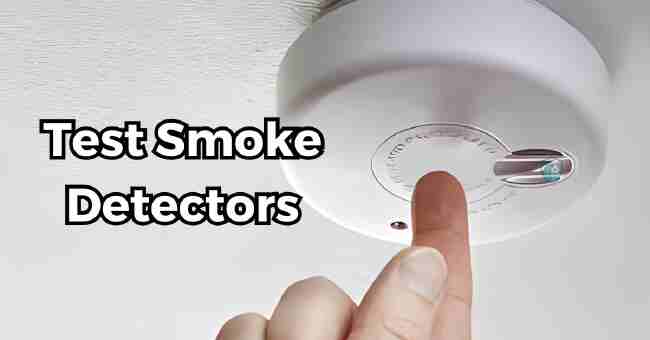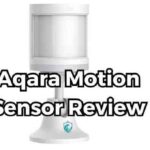Table of Contents
Are you wondering how often to test smoke detectors? You should test smoke detectors once per month.
This testing frequency is vital for early fire detection. I learned this lesson personally years ago when a small kitchen fire broke out while cooking.
Thankfully, the smoke alarms sounded immediately to alert us. We escaped unharmed, but the frightening experience taught me to never take detector testing for granted.
After dealing with fire crews and replacing damaged property, I researched fire safety protocols to prevent another close call.
Authorities like the National Fire Protection Association make clear that monthly smoke detector testing is crucial.
I aim to explain exactly why consistent tests matter so much, provide practical tips to stay on track, and share what happens if you fall behind.
Please keep reading to ensure your home stays protected. After reading, you’ll be fully prepared to test fire alarms with confidence.
Let’s dive in.
Why Smoke Detector Testing Matters
Before diving into logistics on how and when, we first need to cover why consistent smoke detector testing really matters in the first place:
- Save lives by enabling early fire detection – Catching fires early is absolutely vital for safe escape. Functioning smoke alarms buy precious extra minutes to get out.
- Prevent property damage and loss – Out-of-control fires can easily consume entire homes. Good detectors help limit destruction.
- Ensure detectors are actually working properly – Without testing, you won’t know if batteries are drained or alarms are broken.
In short, careful detector testing serves as a simple triple-check that your last line of defense against fires is intact.
How Often To Test Smoke Detectors?
According to the U.S. Fire Administration, smoke detectors should be tested at least once a month and batteries should be replaced at least once or twice a year.
It is also recommended to replace the entire device after 10 years or earlier, depending on the manufacturer’s instructions.
Regular testing and battery replacement can help ensure that smoke detectors are working properly and can help keep families safe in the event of a fire
Now let’s explore best practices so testing itself doesn’t fall through the cracks at home.
Smoke Detector Testing Best Practices
Smoke detectors are designed to be extremely reliable over many years with basic care. Following these standard maintenance steps is key:
- Test smoke detectors monthly – Set a reminder to manually verify alarms are functional on a monthly basis. Push the “Test” button on all units until alarms sound.
- Replace batteries once a year – Either 9V or AA batteries allow detectors to operate independent of electrical wiring. But batteries do fail over time if not swapped out annually.
- Visual inspections for damage – Check that units are clean and intact during each monthly test. Address any physical issues noticed immediately.
Staying on top of maintenance is admittedly mundane compared to more exciting parts of homeownership.
But a bit of disciplined upkeep pays massive dividends by keeping your smoke alarm system in flawless health year after year.
Consequences of Neglecting Tests
Why does missing just a few monthly smoke detector checks matter so much? Consider these significant risks:
- Detectors can fail without any outward sign – An expired battery or faulty wiring won’t produce symptoms you’ll notice on their own. The only way to confirm functionality is active testing.
- Missed opportunity to identify fires earlier – Out-of-sight issues set the stage for tragedy should a real emergency occur. Identifying problems in advance is crucial.
- Risk of battery failure mounts over time – 9V batteries in smoke alarms last about one year installed. Letting cells discharge to depletion leaves your home vulnerable.
In short, don’t wait for a terrifying experience like waking up to a smoking room or blaring alarms going off unexpectedly.
Consistent detector checkups avoid nasty surprises and keep protection intact.
Tips For a Comprehensive Smoke Detector Test
Now we’ll get into logistical tips and tricks to help streamline the testing process at home:
| Goal | Action Items |
|---|---|
| Test Hard-To-Reach Units | Use a broom handle to press test buttons on ceiling-mounted detectors. Or consider installing specialty remote test tools sold online and at hardware stores. |
| Check Associated Systems | Verify functionality of integrated emergency lighting, monitored alarms, etc. A multi-system check ensures full protection. |
| Document Testing Activity | Note test dates, battery changes, unusual issues noticed. Maintain logs to inform future replacement timing. |
A few helpful pointers to keep in mind:
- Enlist family members to assist testing detectors throughout the home.
- Refer to manufacturer documentation for unit-specific test procedures.
- Set calendar reminders to help stay on track with monthly tests.
While individual unit tests just take seconds, properly checking all detectors home-wide is admittedly time-consuming.
But staying safe from fires makes a minor monthly chore well worth the payoff.
When To Replace Smoke Detectors Entirely
In addition to routine maintenance, smoke detectors also have defined lifespans. Here’s when full unit replacements become necessary:
- Replace after 10 years from manufacture date – Their sensitive electronic components degrade over time. Most brands clearly note an expiration year on the back label indicating the end of reliable function.
- Earlier replacement if physically damaged – Drops, cracks, smoke residue buildup and other visible damage compromise sensitivity. Don’t take chances.
- Upgrade to latest technology models – Today’s smart detectors have better connectivity and sensors than decades-old predecessors.
Replacing detectors on schedule ensures you always benefit from reliable components and contemporary features.
And as affordable as modern units are, replacing them after 10 years is very worthwhile. Just be sure to document new install dates for future reference.
Proper Placement For Reliability
Even with reliable smoke detectors, optimal placement impacts how well they protect occupants when danger strikes.
Follow these evidence-based tips:
- Put near bedrooms and in common living areas – Catching fires quickly where residents spend the most time enables safe escape.
- Keep away from windows, bathrooms and kitchens – Environmental factors like humidity and cooking smoke/steam cause false alarms.
- Place detectors high on ceilings and walls per codes – Enables identifying smoke generated by typical house fires earlier.
Refer to local building codes and manufacturer guidelines for number and exact positioning of detectors in a given space.
Replacing old detectors offers a perfect opportunity to check overall compliance too.
FAQs
How Often Are Smoke Alarms Checked?
Smoke alarms should be checked at least once per month to ensure they are still functioning properly.
Simply press and hold the test button until the alarm sounds – this takes just seconds per alarm.
While quick, performing these monthly smoke detector tests is vital for confirming batteries and sensors still work.
Many safety experts actually recommend weekly testing for the highest reliability. But at minimum aim to test all smoke alarms on a monthly basis.
How Long Do Smoke Detectors Last?
The sensitive electronic components within smoke detectors gradually degrade over time.
Most smoke alarms last around 10 years from their date of manufacture before needing full replacement.
Look for an expiration year marked on the back of units – after this date, it’s no longer smart to rely on them detecting fires.
Occasionally faulty alarms need early replacement too following physical damage or exposure to elements. But with basic maintenance, a decade of reliable use is standard.
How Often Should Smoke Alarms Be Tested Nfpa?
The National Fire Protection Association recommends testing smoke alarms on a monthly basis at minimum.
They also advise replacing smoke detector batteries annually even if they still appear to work.
Consistently conducting NFPA-advised monthly smoke alarm tests and annual battery swaps ensures your fire detection system works reliably over many years as intended. Falling behind on checks leaves homes vulnerable to detector failure.
How Do I Test My Smoke Detectors?
Testing smoke detectors is very straightforward. Simply locate the square plastic test button on all smoke alarm units, then firmly press and hold this button for a few seconds until a loud alarm sounds.
You’ll want to activate alarms this way one-by-one for all smoke detectors in a home to confirm everything functions properly.
Also pay attention for any additional visual cues like blinking power lights after pressing test buttons.
How Long Should A 9v Battery Last In A Smoke Detector?
With normal use, a fresh 9-volt alkaline battery should reliably power a self-contained smoke detector for around 1 year.
Lithium 9v cells can technically last up to 2 years. But no matter the chemistry, smoke detector batteries slowly self-discharge over time while installed.
And depleted batteries cannot power alarm sensors. That’s is why safety organizations recommend proactively swapping out batteries annually regardless of remaining charge.
How Do I Know If My Smoke Detector Is Bad?
Warning signs suggest a smoke detector unit itself has failed, rather than just featuring dead batteries.
If the alarm horn sounds randomly, buttons or sensors are unresponsive or damaged, or power lights don’t activate properly, the device likely needs full replacement.
Smoke detectors can also simply get old and unreliable. Units more than 10 years from their date of manufacture should get replaced as a rule of thumb.
What Are The Testing And Maintenance Requirements For Smoke Alarms?
Major smoke alarm authorities like NFPA strongly advise following certain smoke detector testing and maintenance best practices:
- Monthly manual tests verifying all alarms properly activate
- Annual battery changes to prevent power supply issues
- Regular visual inspections looking for any physical damage
- Full unit replacements after 10 years of use on average
Staying on top of these simple maintenance steps keeps protection fully intact over decades.
What Is The Maximum Distance Between Smoke Detectors In Meters?
Most residential building code standards specify that smoke detectors must be installed within every 7.5 meters (or 25 feet) horizontally in a home.
Detectors also need to be on every floor level. So spacing multiple devices at these intervals provides overlapping coverage that enables catching developing fires early.
You may be able to space certain specialized detectors slightly further apart while still meeting local regulations.
How Often Should You Replace All Smoke Alarms?
Industry recommendations are to replace all smoke alarms after 10 years from their manufacture date.
At this age, electronic components reach wearing-out points making unreliable detection more likely over time.
Replacing full devices also provides a chance to upgrade to newer safety technologies.
If existing units still seem functional after a decade, they should at least get tested more frequently. But a full overhaul gives the most protection.
Conclusion
Routine smoke detector testing serves as the core foundation enabling detectors to live up to their lifesaving purpose over many years.
Following basic monthly testing and annual battery replacement best practices avoids problems down the road.
Replacing outdated but still operational detectors at the 10 year mark then refreshes sensitive electronics to like-new functionality going forward.
Staying on schedule with smoke alarm system maintenance pays incredible dividends.
At minimum it prevents expensive detector replacements after battery failure damage.
More importantly it provides essential peace of mind that your family stays protected should catastrophe strike.
Compared to these massive benefits, a few minutes testing monthly represents trivial effort.
So set device testing reminders for yourself and document activity moving forward.
Enlist housemates to help check detectors home-wide for a more thorough test. And upgrade aging detectors that have passed the decade mark to leading contemporary models.
Investing a small bit of discipline into the smoke alarm testing routine keeps your home resilience maximized over the long term.



